Aardonyx Guide:
Aardonyx was an early dinosaur that lived in South Africa about 200 million years ago.
Aardonyx was an early dinosaur that lived in South Africa about 200 million years ago.
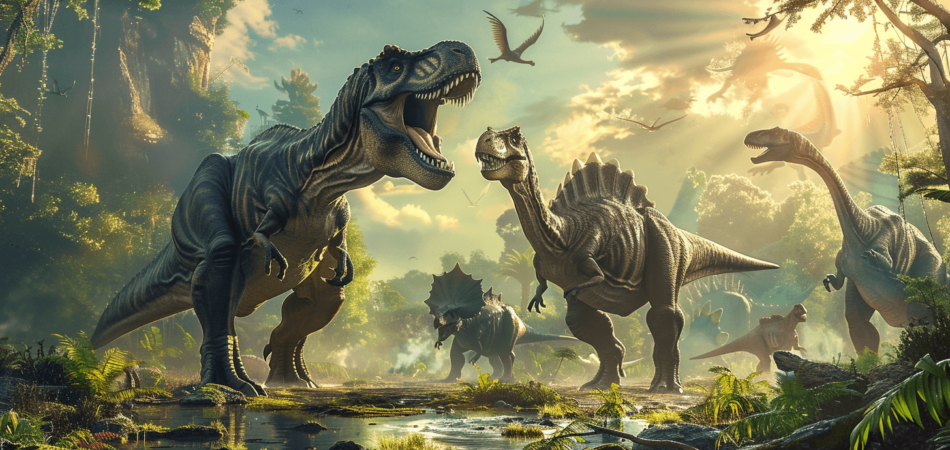
The prevailing theory that an asteroid impact spelled doom for the dinosaurs of the Cretaceous period raises more questions than it answers. Scientists have pieced together a narrative of survival, adaptation, and eventual extinction, but gaps in our understanding remain.
The diversity of species, from the towering Tyrannosaurus Rex to the smaller, bird-like Velociraptor, suggests a complex ecosystem that was both robust and fragile. As one explores the intricacies of their existence, it becomes clear that the story of these prehistoric giants is not just about their end but also about the marvels of evolution and the delicate balance of life on Earth.
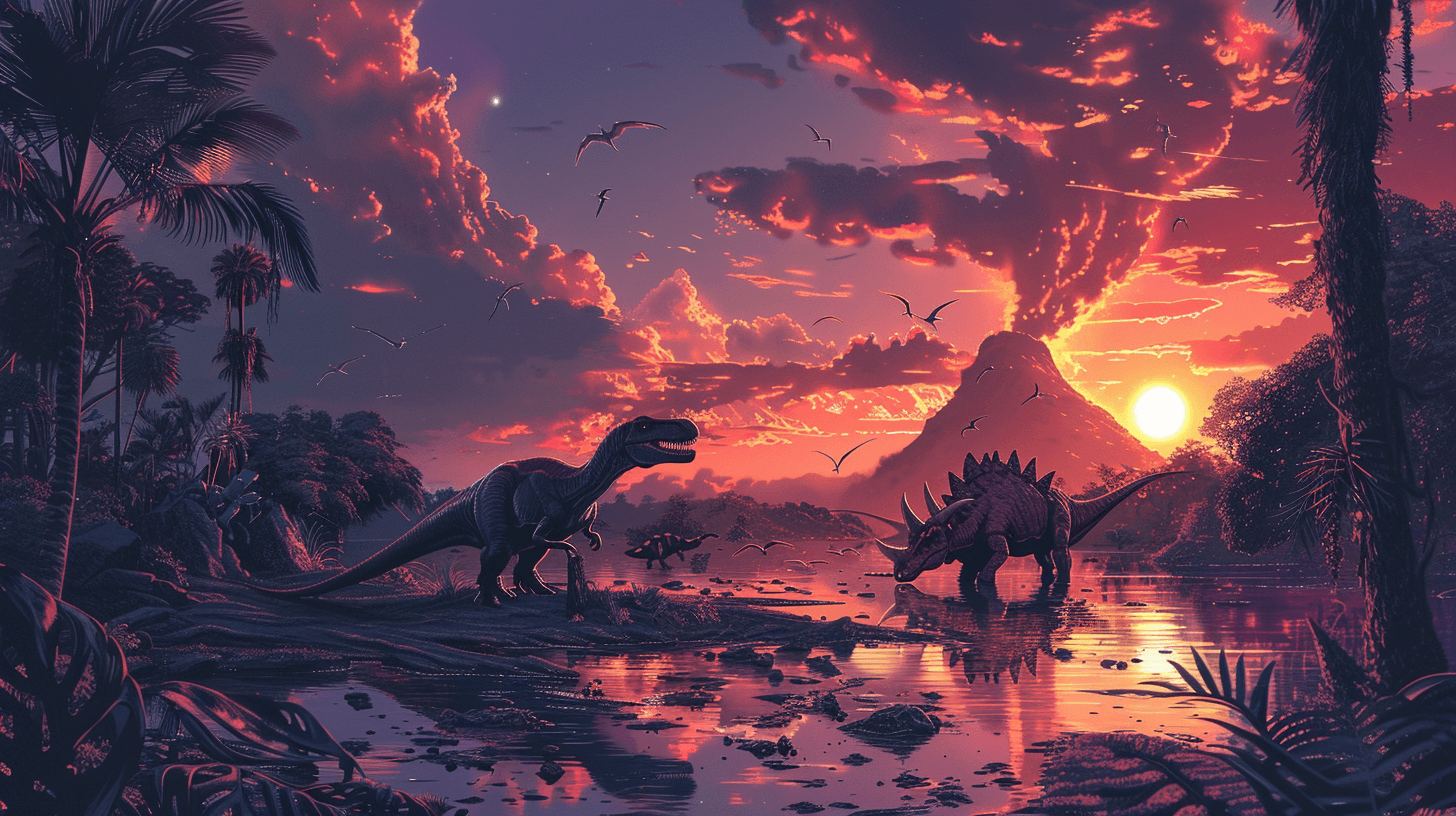
The Cretaceous period witnessed the flourishing and eventual extinction of numerous dinosaur species, influenced by environmental shifts and competition for limited resources. This era, a pivotal time in Earth’s history, saw dinosaurs navigate a world of changing climates and evolving landscapes. Fossil records from this period provide a window into the lives of these ancient creatures, showcasing a diverse array of species that roamed the Earth.
As the Cretaceous unfolded, dinosaurs encountered a variety of environmental challenges. Changing climates altered habitats and food sources, forcing species to adapt or face extinction. Competition for resources intensified as diverse species vied for dominance in ancient ecosystems. These pressures tested the evolutionary paths of dinosaurs, leading to the emergence of specialized adaptations and behaviors.
Despite their resilience, dinosaurs couldn’t overcome the ultimate challenge: the extinction event that marked the end of the Cretaceous period. This cataclysmic event reshaped life on Earth, leading to the demise of many dinosaur species. The fossil records from this time serve as a poignant reminder of the impermanence of life and the ever-changing nature of our planet.
Understanding the dynamics of life and death in the Cretaceous helps us piece together the puzzle of ancient ecosystems and the evolutionary journeys of dinosaurs. It’s a story of survival, adaptation, and ultimately, extinction, reflecting the precarious balance between life and the environmental challenges it faces.
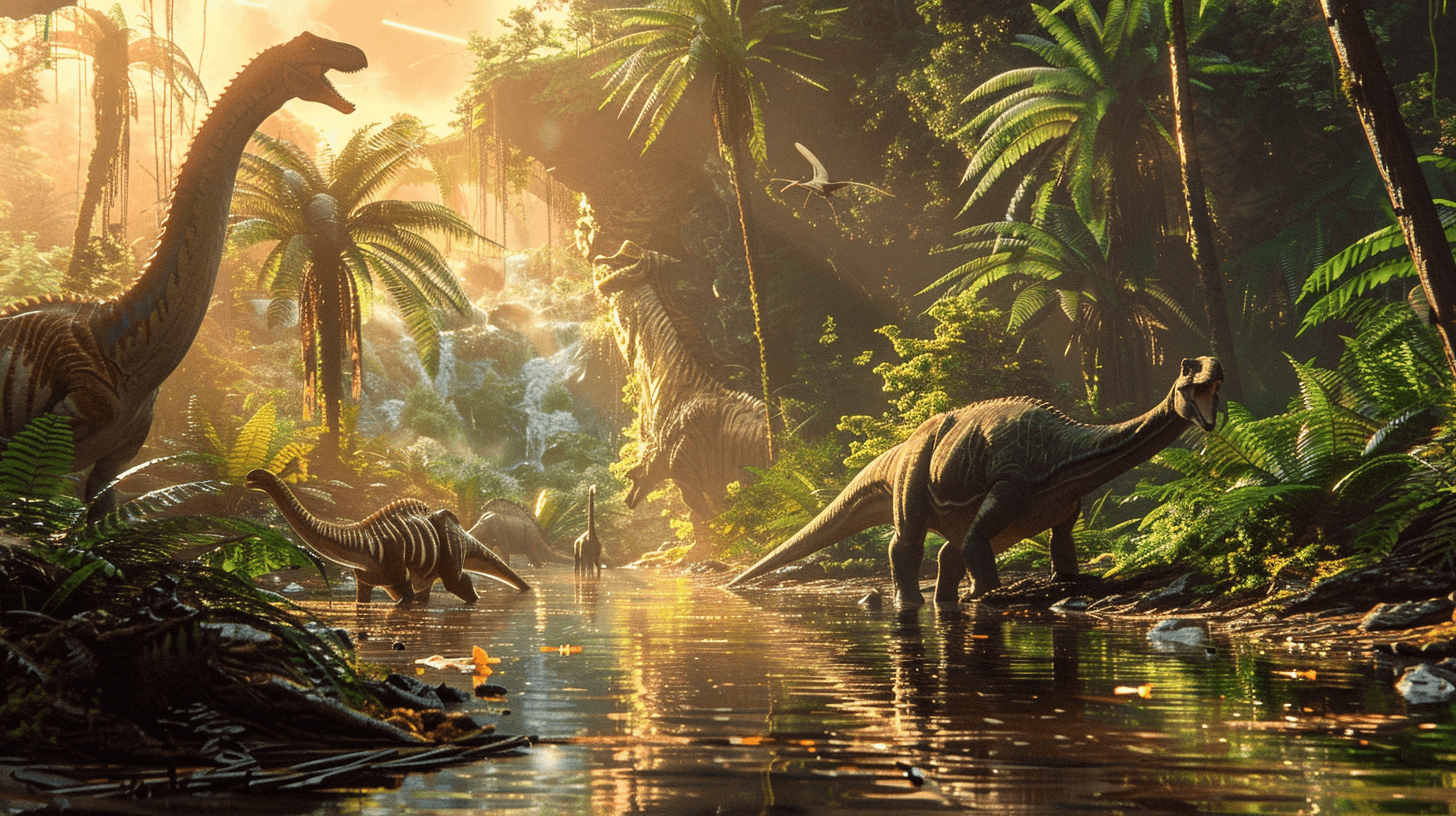
Exploring the Cretaceous period further, it’s time to meet the dinosaurs that defined this era. Among them was the fearsome Albertosaurus, a close relative of the Tyrannosaurus. Hailing from Alberta, Canada, this theropod measured an impressive 8-10 meters in length, dominating its environment with a formidable presence.
Another remarkable dinosaur from this period was the Baryonyx, known for its unique diet of fish. This spinosaurid, discovered in Early Cretaceous England, reached lengths of up to 10 meters, showcasing the diversity in feeding habits among theropods.
Not to be outdone, the Carcharodontosaurus, a massive North African predator, boasted a skull longer than that of a Tyrannosaurus. At 14 meters in length, it was one of the apex predators of its time, revealing the fierce competition among theropods for dominance.
The Carnotaurus, from Argentina, offered a glimpse into the variety of theropod adaptations, with its notable speed and distinctive horns. This agile hunter, ranging from 5 to 9 meters in length, emphasized the evolutionary creativity of Cretaceous dinosaurs.
Lastly, the Deinonychus, an agile pack hunter from the USA, showcased the intelligence and social behavior of some theropods. Measuring around 4 meters long, its presence underscores the complexity of dinosaur ecosystems, where cooperation could be as crucial as size and strength.
These dinosaurs, among many others, paint a vivid picture of life during the Cretaceous period. With every discovery, we unveil more about these magnificent creatures that once roamed the Earth, igniting our imagination and deepening our understanding of our planet’s past.
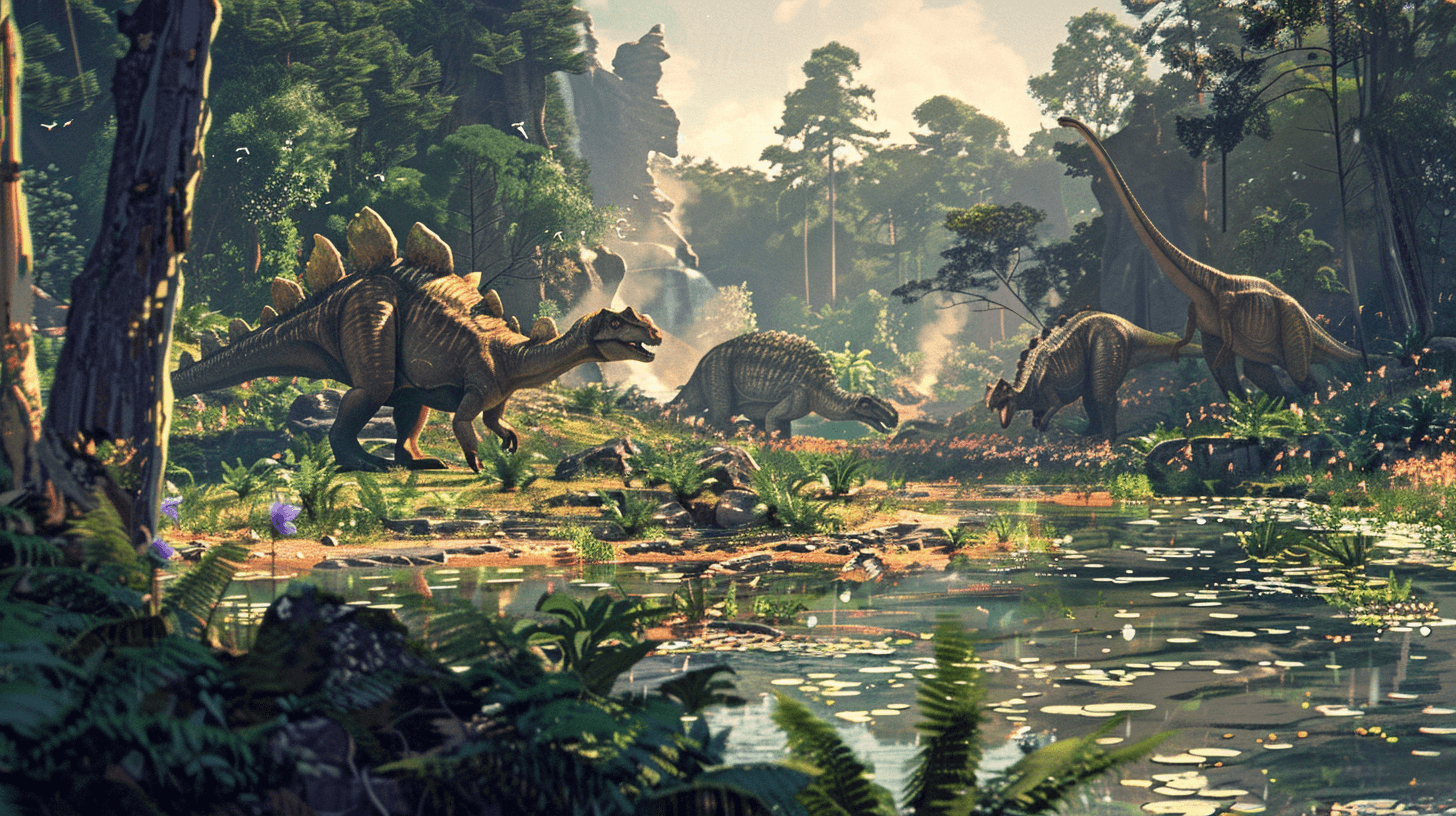
Cretaceous dinosaurs, showcased in parks worldwide, offer a window into the diverse environments these ancient creatures once inhabited. Through the lens of parks like Dinosaur Provincial Park in Canada and various Alaskan parks, visitors and scientists alike gain insights into the life and times of these majestic beings. The fossil records, meticulously preserved and displayed, reveal not just the bones but the stories of ecosystems from millions of years ago.
Parks holding these treasures serve as natural museums, drawing attention to the wide distribution of Cretaceous dinosaurs across the planet. In places like Dinosaur Provincial Park, the fossilized remains tell tales of a time when these giants roamed vast and varied landscapes. The significance of Alaskan parks, on the other hand, lies in their tracks, offering clues to the movement and behaviors of these ancient animals.
Exhibits near the Western Interior Seaway provide a glimpse into the aquatic and semi-aquatic lives that thrived alongside the dinosaurs. These parks, through their preservation of fossil records, allow for a deeper understanding of Cretaceous ecosystems, highlighting the complex interactions between different species and their environments. Visitors to these exhibits can explore the diverse array of marine life, from giant reptiles like mosasaurs to various shellfish that once populated these waters. The informative displays not only showcase the organisms that flourished in this unique habitat but also illuminate the evolutionary pathways that shaped their existence. For those planning a visit, the cabazon dinosaurs road trip highlights offer a perfect opportunity to delve into both land and sea creatures that inhabited this dynamic region during the Cretaceous period.
Moreover, the geographic scatter of fossils in parks underscores the extensive range these creatures once had. From dense forests to coastal plains, Cretaceous dinosaurs adapted to a multitude of habitats, as evidenced by their diverse remains found in parks across the globe.
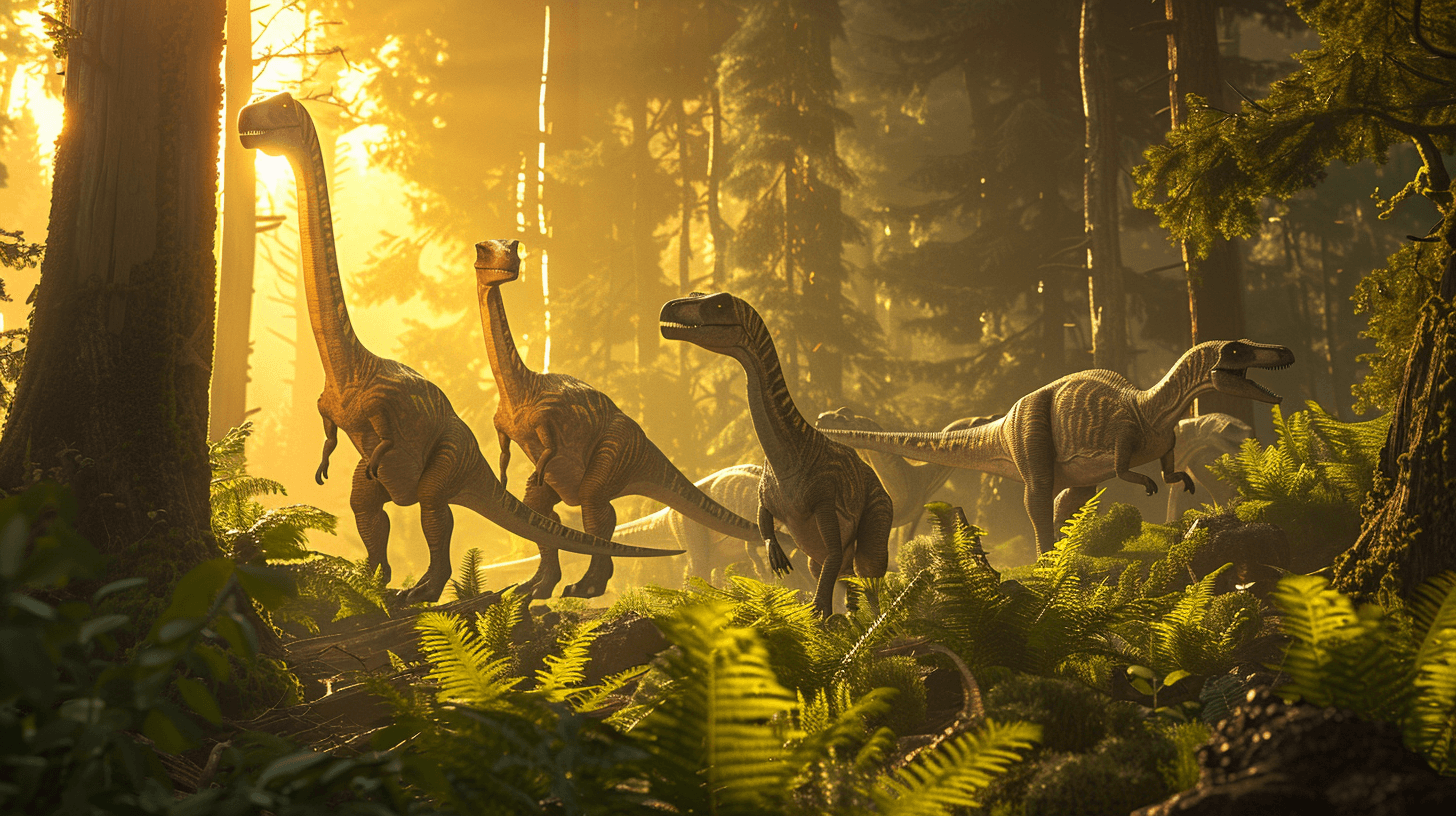
Herbivorous dinosaurs evolved remarkable adaptations, including specialized teeth and complex digestive systems, to thrive on the tough vegetation of the Cretaceous period. These evolutionary advancements allowed them to play a crucial role in shaping the ecosystems of their time. As they fed on a variety of plants, these dinosaurs contributed significantly to the dispersal of seeds, affecting the distribution and abundance of plant species across different landscapes.
The table below highlights some of the key herbivorous dinosaurs from the Cretaceous period and their unique adaptations:
| Dinosaur | Adaptation | Role in Ecosystem |
|---|---|---|
| Triceratops | Frills and horns for defense | Helped maintain plant diversity |
| Edmontosaurus | Complex digestive system | Aided in seed dispersal |
| Ankylosaurus | Armor and tail clubs for protection | Influenced plant growth patterns |
| Stegosaurus | Spikes and plates for defense | Contributed to landscape shaping |
| Gallimimus | Beak-like mouth for feeding | Assisted in breaking down tough vegetation |
These adaptations not only helped herbivorous dinosaurs survive in the competitive Cretaceous period but also allowed them to influence the structure and function of their ecosystems profoundly. From the mighty Triceratops with its intimidating frills and horns to the armored Ankylosaurus, each dinosaur had a unique set of features tailored to its lifestyle and diet. The specialized teeth of these herbivores were crucial for grinding down fibrous plant material, while their digestive systems were adept at extracting nutrients from the tough Cretaceous flora. This synergy between physical adaptations and ecological roles underscores the complexity of ancient ecosystems and the interdependence of life forms within them.
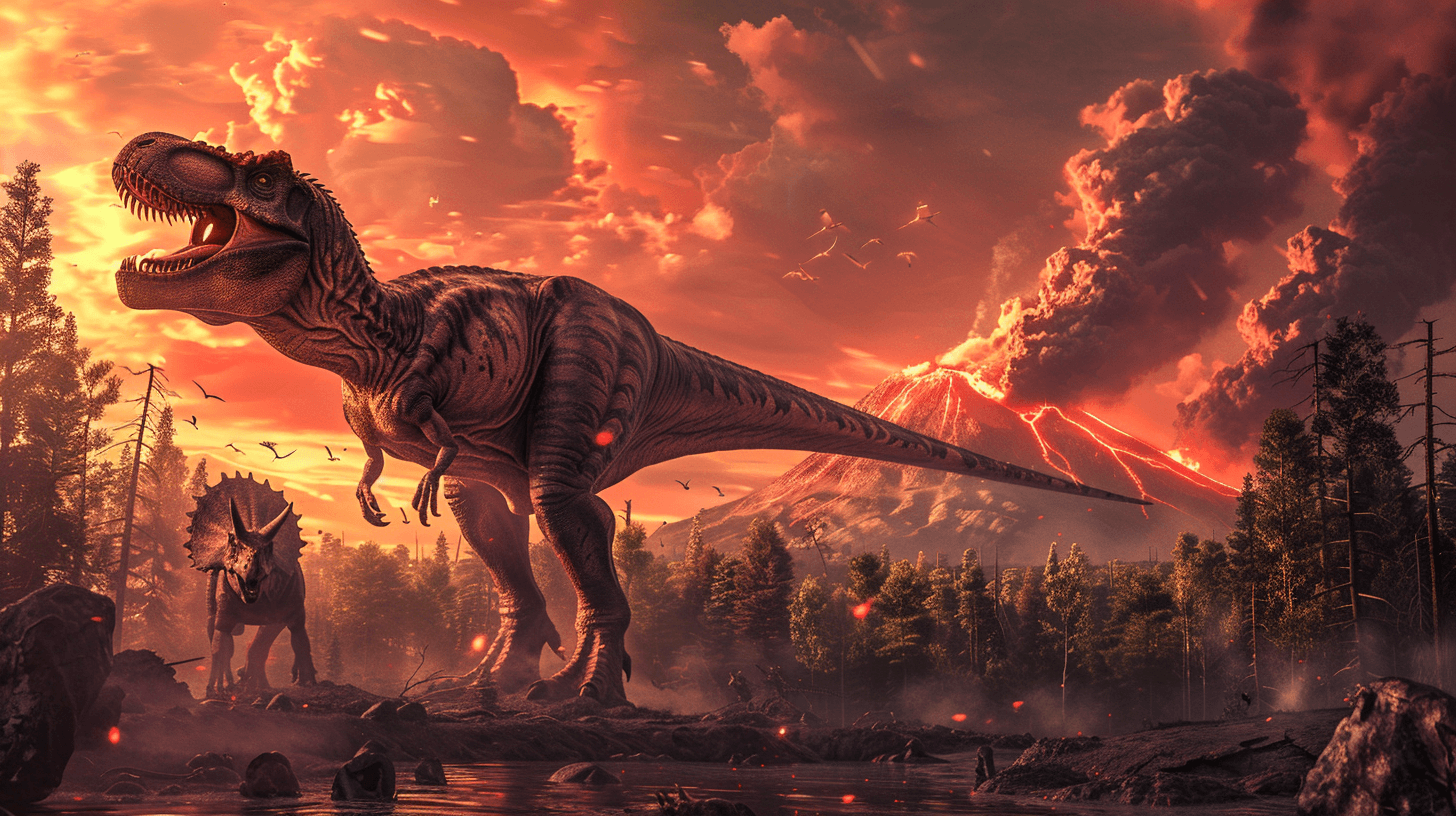
The Late Cretaceous period was dominated by a variety of fearsome predators, including the mighty Tyrannosaurus Rex and the swift Velociraptor. These creatures roamed the landscapes in search of prey, showcasing the diversity and adaptability of predatory dinosaurs during this era.
Tyrannosaurus Rex, often hailed as the king of the dinosaurs, was a formidable predator with massive jaws and sharp teeth, capable of delivering a fatal bite to its victims. Meanwhile, the Velociraptor, known for its speed and agility, used its sharp claws and intelligent hunting strategies to catch smaller prey.
The Late Cretaceous wasn’t just about these popular carnivores; it also featured the Spinosaurus, the largest of all carnivorous dinosaurs. With its distinctive sail-back and crocodile-like snout, Spinosaurus likely hunted both on land and in water, showcasing a unique adaptation among theropods.
Other notable predators of the time include the Giganotosaurus and Carcharodontosaurus, both of which rivaled the size of Tyrannosaurus Rex. These giants roamed the ancient landscapes, relying on their size and strength to overpower large herbivores.
Smaller but equally lethal predators like Deinonychus and Gallimimus used their speed and agility to hunt in packs or scavenge for food, proving that size wasn’t everything in the Late Cretaceous predator-prey dynamics.
Additionally, predators such as Gorgosaurus and Carnotaurus added to the diversity of hunting strategies, with Carnotaurus’s short, bull-like horns suggesting it might’ve engaged in close combat with its prey.
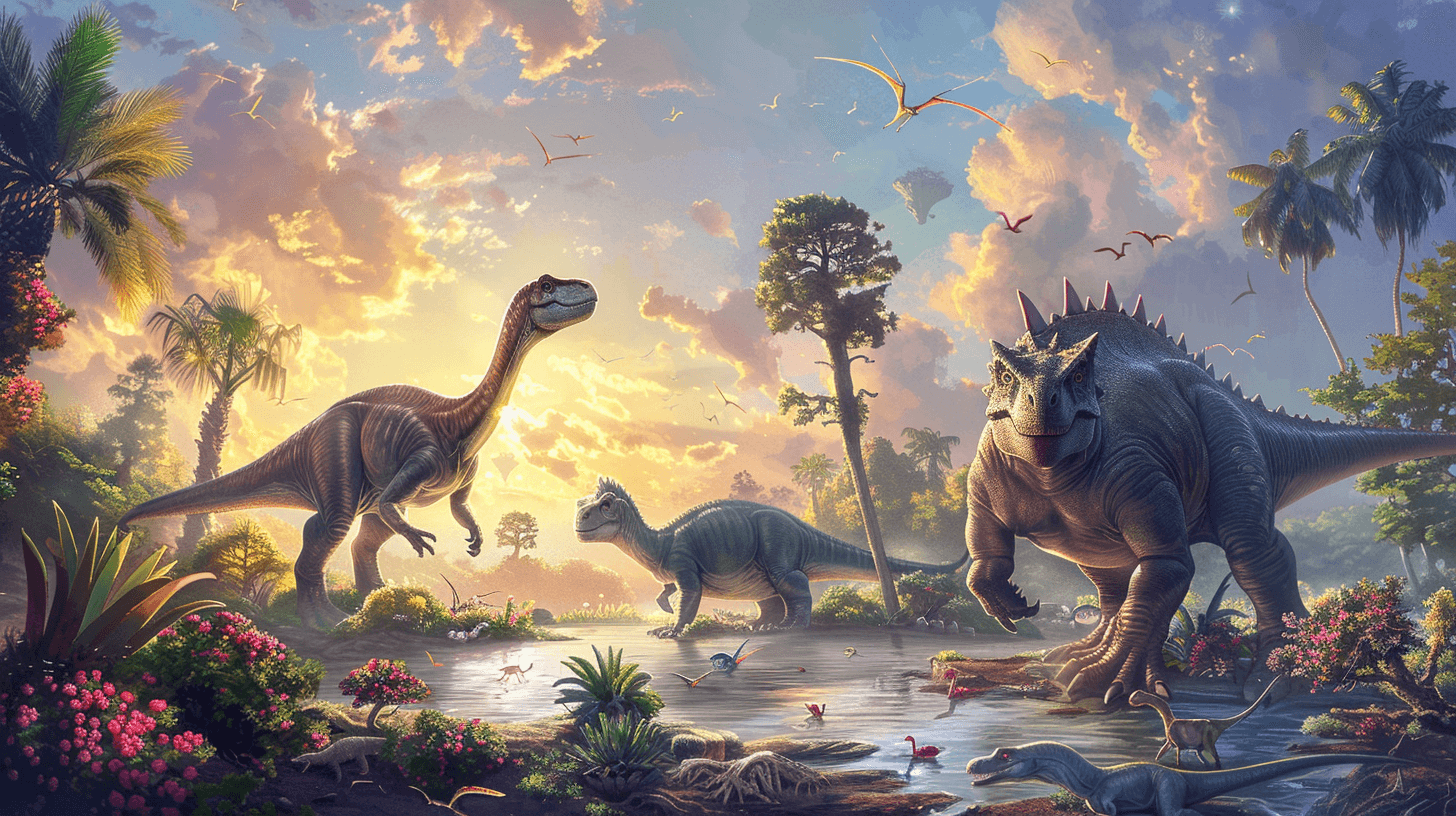
Around 140 million years ago, flowering plants, also known as angiosperms, first emerged, dramatically transforming Earth’s landscapes and ecosystems. Originating in the Early Cretaceous period, these plants underwent rapid diversification, altering not just the physical environment but also the dynamics of life forms existing within it. The proliferation of angiosperms marked a significant evolutionary milestone, heralding a new era in which these plants would eventually dominate terrestrial ecosystems.
The rise of flowering plants wasn’t just a boon for the angiosperms themselves; it significantly impacted herbivorous dinosaurs. These prehistoric giants found in the lush, diverse habitats created by flowering plants an abundant source of food, which in turn influenced their survival and evolutionary success. The introduction of fruits and seeds from angiosperms provided nutritious food sources, diversifying the diets of these dinosaurs and possibly contributing to their physical development and diversity.
Equally important was the co-evolution between flowering plants and pollinators. This symbiotic relationship ensured the survival and spread of angiosperms across the globe. Insects, and later birds, played a pivotal role in the pollination of these plants, facilitating their widespread dispersal and diversification. This mutualistic relationship underscored the interconnectedness of life forms during this period, highlighting the evolutionary success of both flowering plants and their pollinators.
During the Cretaceous period, shifting continents created land bridges that facilitated the widespread dispersal of dinosaurs across the globe. The breakup of the supercontinent Gondwana into separate landmasses, coupled with the formation of Laurasia due to continental drift, redefined the geographical boundaries of the planet. These continental connections allowed for unparalleled exchanges among dinosaur populations, significantly influencing their evolutionary paths.
As Gondwana split, it gave rise to distinct ecosystems, each fostering a unique set of flora and fauna. The movement of the continents, driven by the forces of continental drift, didn’t just alter the physical landscape; it also ushered in significant climate changes. These changes, in turn, affected the distribution and diversity of plant and animal life, setting the stage for the evolution of new dinosaur species. The creation of land bridges between what had once been separate landmasses enabled dinosaurs to migrate, compete, and thrive in new territories, thus shaping the global dinosaur community.
The impact of these continental connections on the Cretaceous ecosystem can’t be overstated. As Laurasia and the fragments of Gondwana drifted apart, they carried with them their unique inhabitants, leading to a diversification of life that would lay the groundwork for modern biodiversity. The interconnectedness of these landmasses played a crucial role in the dissemination of species, allowing dinosaurs to conquer new environments and adapt to a variety of ecological niches. This dynamic period of earth’s history showcases the profound influence of continental drift and climate changes on the evolutionary journeys of the most iconic creatures to have ever walked the earth.
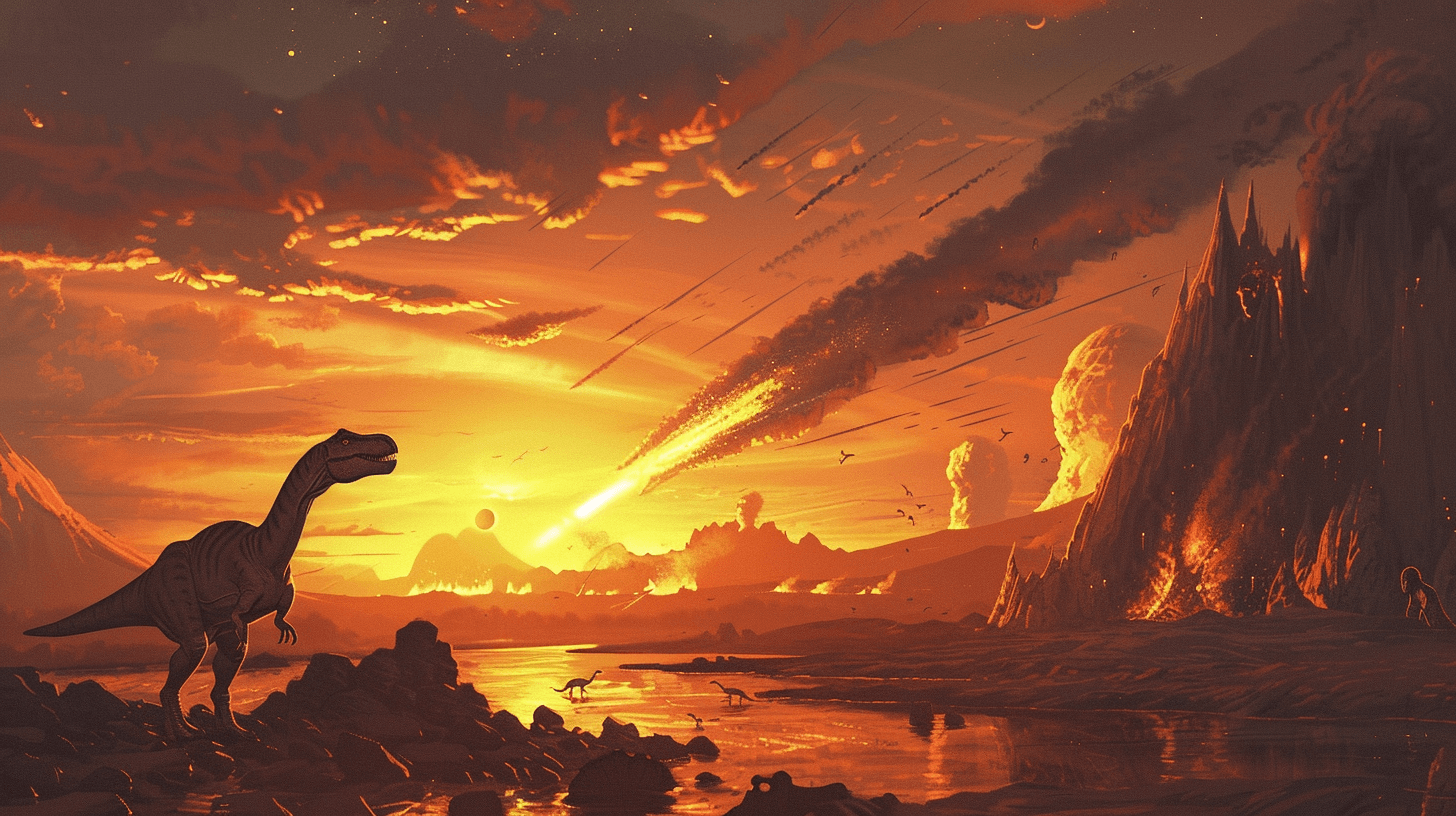
As continents shifted and dinosaurs thrived, an era of extinction events abruptly halted their reign, marking the end of the Cretaceous period. The Late Cretaceous was a time of significant upheaval, leading to the disappearance of many dinosaur species. These extinction events, driven by a combination of natural catastrophes, reshaped life on Earth.
The asteroid impact hypothesis stands as the leading theory behind the mass extinction. Scientists believe that a colossal asteroid striking the Earth triggered a series of environmental changes, causing a drastic decline in dinosaur populations. This catastrophic event would have unleashed immense amounts of dust and particles into the atmosphere, blocking sunlight and disrupting the climate on a global scale.
Volcanic activity further compounded the challenges faced by dinosaurs. Eruptions during the Late Cretaceous spewed vast quantities of ash and gases into the atmosphere, exacerbating the climate change initiated by the asteroid impact. These volcanic events could have led to a significant cooling of the Earth’s surface, making survival increasingly difficult for dinosaurs accustomed to warmer climates.
In addition to the asteroid impact and volcanic activity, ongoing climate change played a crucial role in the dinosaur extinction. Shifts in temperature and sea levels would have altered habitats and food sources, putting further pressure on dinosaur populations. The combination of these factors likely led to the major extinction event that ended the era of the dinosaurs.
Understanding the extinction events of the Late Cretaceous sheds light on the complexity of dinosaur extinction. It wasn’t a single event but a series of catastrophic changes that culminated in the disappearance of these magnificent creatures from our planet.
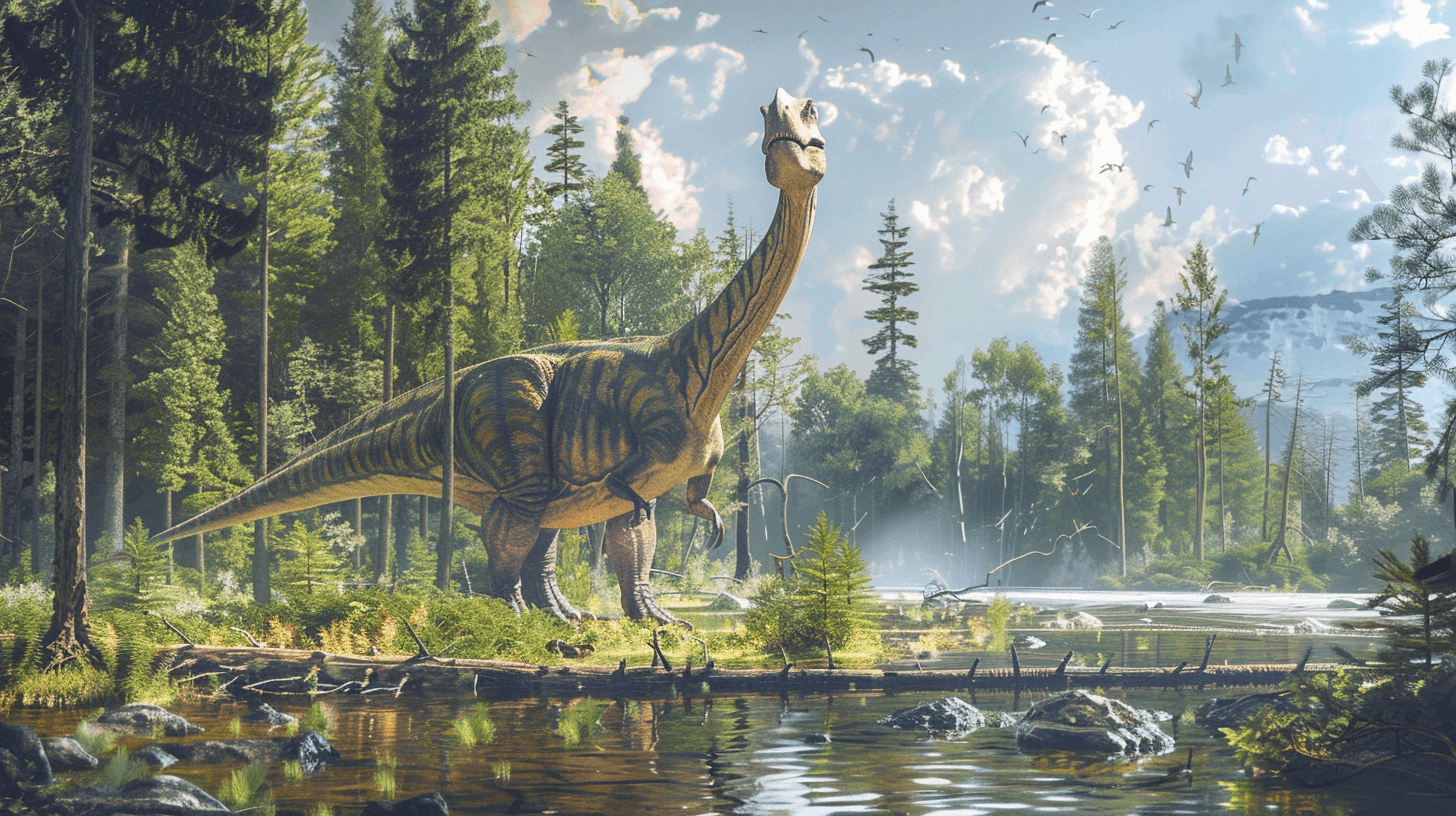
To thrive in the Cretaceous period’s diverse ecosystems, dinosaurs developed a range of adaptations, from specialized teeth to feathers, enhancing their survival and dominance. These evolutionary tactics allowed them to exploit various ecological niches, from dense forests to open plains, and to face the challenges of their environments head-on.
The adaptative features that contributed significantly to their survival include:
These adaptations underscore the dinosaurs’ remarkable ability to evolve in response to their changing environments. From the development of feathers to the strategic advantage of pack hunting, each adaptation played a crucial role in the survival of these ancient giants during the Late Cretaceous, showcasing the dynamic interplay between life and the planet’s ever-changing face.
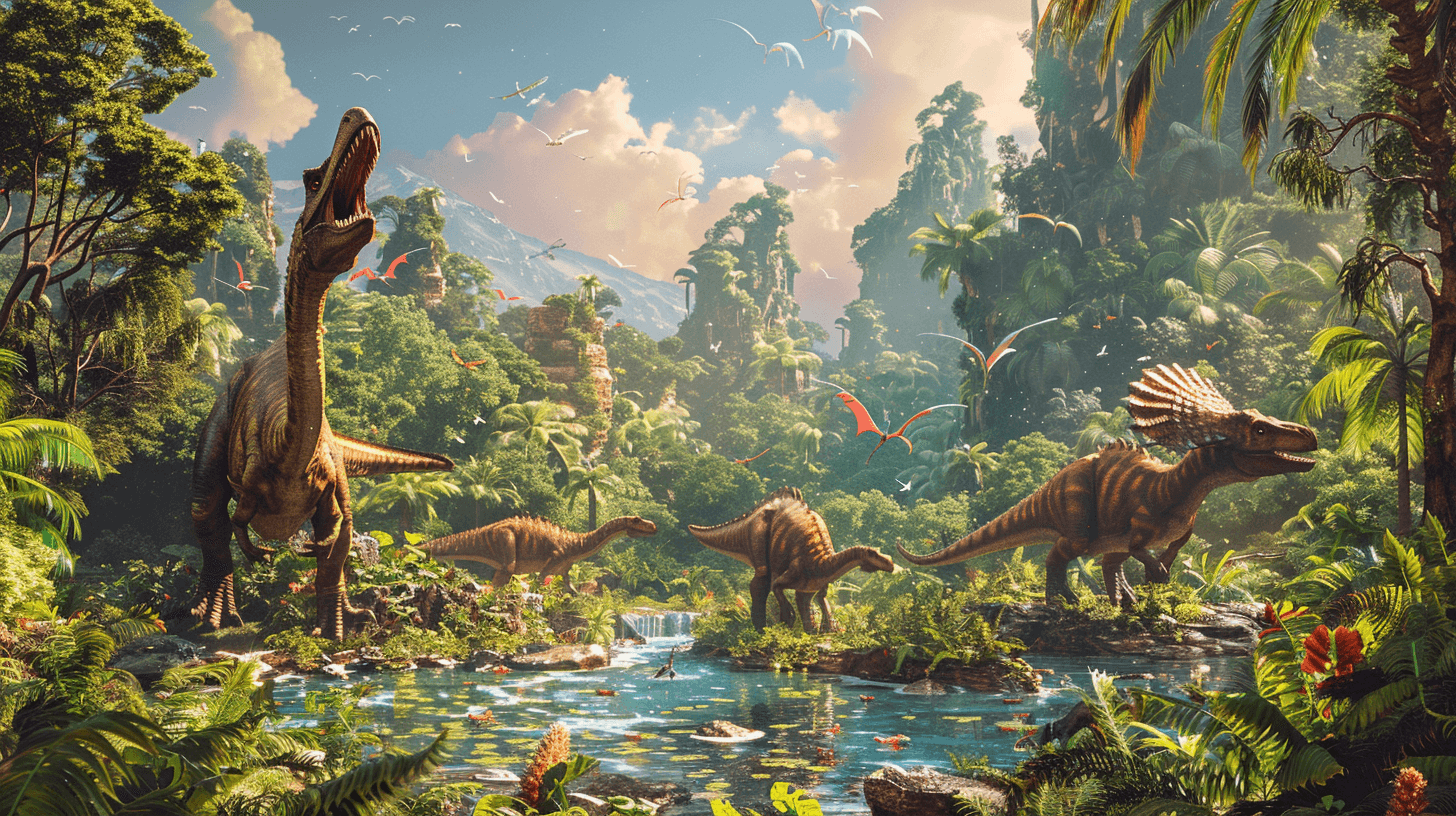
Recent fossil finds across the globe, from North America’s Hell Creek Formation to Africa’s Kem Kem Beds, have significantly enriched our understanding of Late Cretaceous dinosaurs. These discoveries, alongside those in the Gobi Desert in Asia and Patagonia in South America, highlight the global distribution of dinosaur fossils and shed light on the rich diversity that characterized this era. Dinosaur Provincial Park in Canada, in particular, has yielded significant finds, further contributing to our grasp of the various species that thrived during this period.
Research into the Late Cretaceous paleoenvironment reveals a world of lush forests, abundant ferns, shallow seas, and towering mountain ranges, offering a vivid backdrop to the lives of these prehistoric giants. This era, marked by the evolution of flowering plants and the connection of continents, provided a fertile ground for dinosaur evolution, adaptation, and eventually, their struggle against extinction challenges.
The knowledge gained from these fossils and environmental studies is crucial for understanding how dinosaurs adapted to their changing world. It illustrates not just their sheer diversity but also the complex ecosystems they were part of. The findings underscore the impact of external factors, such as asteroid impacts, volcanic activity, and climate change, on their survival. Through meticulous research and ongoing discoveries, scientists continue to piece together the intricate puzzle of dinosaur life in the Late Cretaceous, offering insights into their eventual decline and extinction. This ongoing quest for knowledge underscores the dynamic nature of paleontology, revealing how each find brings us closer to understanding the ancient past.
This era hosted a variety of dinosaurs, including the fast-running Gallimimus, the horned Triceratops, and the fierce Deinonychus.
Plant-eaters like Ankylosaurus thrived alongside predators.
The period was marked by significant changes, including the evolution of flowering plants and shifting continents, which shaped the lives of these prehistoric creatures until their eventual extinction.
Earth’s history isn’t just a long nap but a series of action-packed epochs. The four main acts are the Triassic, Jurassic, Cretaceous, and the catch-all finale, the Mesozoic.
Each period showcases a unique cast of scaly stars, evolving landscapes, and climatic cliffhangers. They set the stage for epic tales of survival, adaptation, and, in a dramatic curtain call, the dinosaurs’ exit. Cue the asteroid and volcanoes.
Notably, species like Triceratops, Ankylosaurus, and Tyrannosaurus Rex managed to survive until this era’s close.
Additionally, Hadrosaurids, including Edmontosaurus with their distinctive duck-billed faces, and massive Sauropods like Argentinosaurus, were among the survivors.
These dinosaurs adapted to their changing environments, but ultimately, none could withstand the catastrophic events leading to their extinction.
Cretaceous dinosaurs roamed the earth like ancient titans, during a period that spanned approximately 79 million years, from 145 to 66 million years ago. They were the rulers of their era, experiencing significant environmental shifts.
From towering predators to gentle giants, these creatures varied widely in age and adaptation. Their reign saw the rise and fall of countless species, each adapting in its own way to the ever-changing landscape of the late Mesozoic Era.